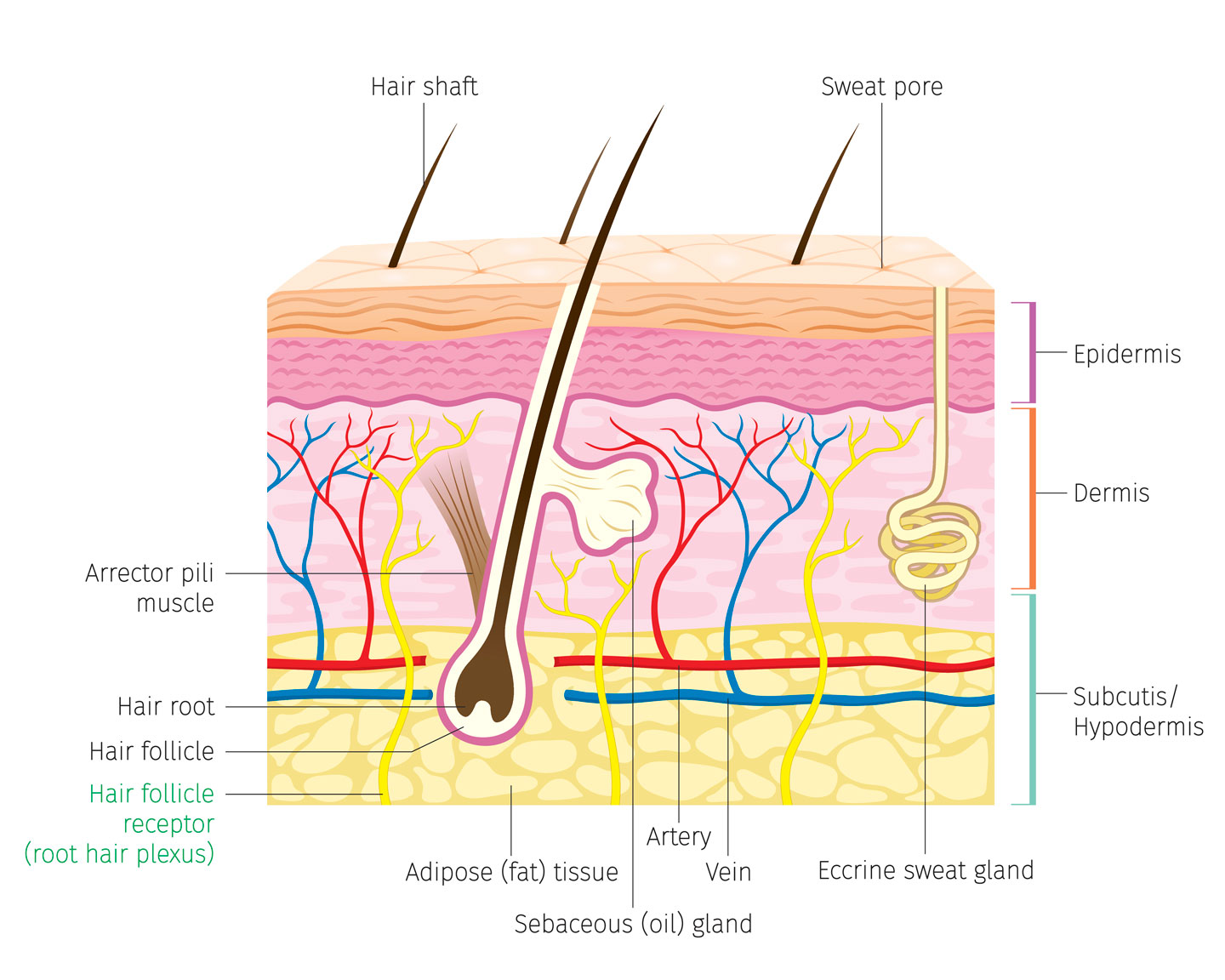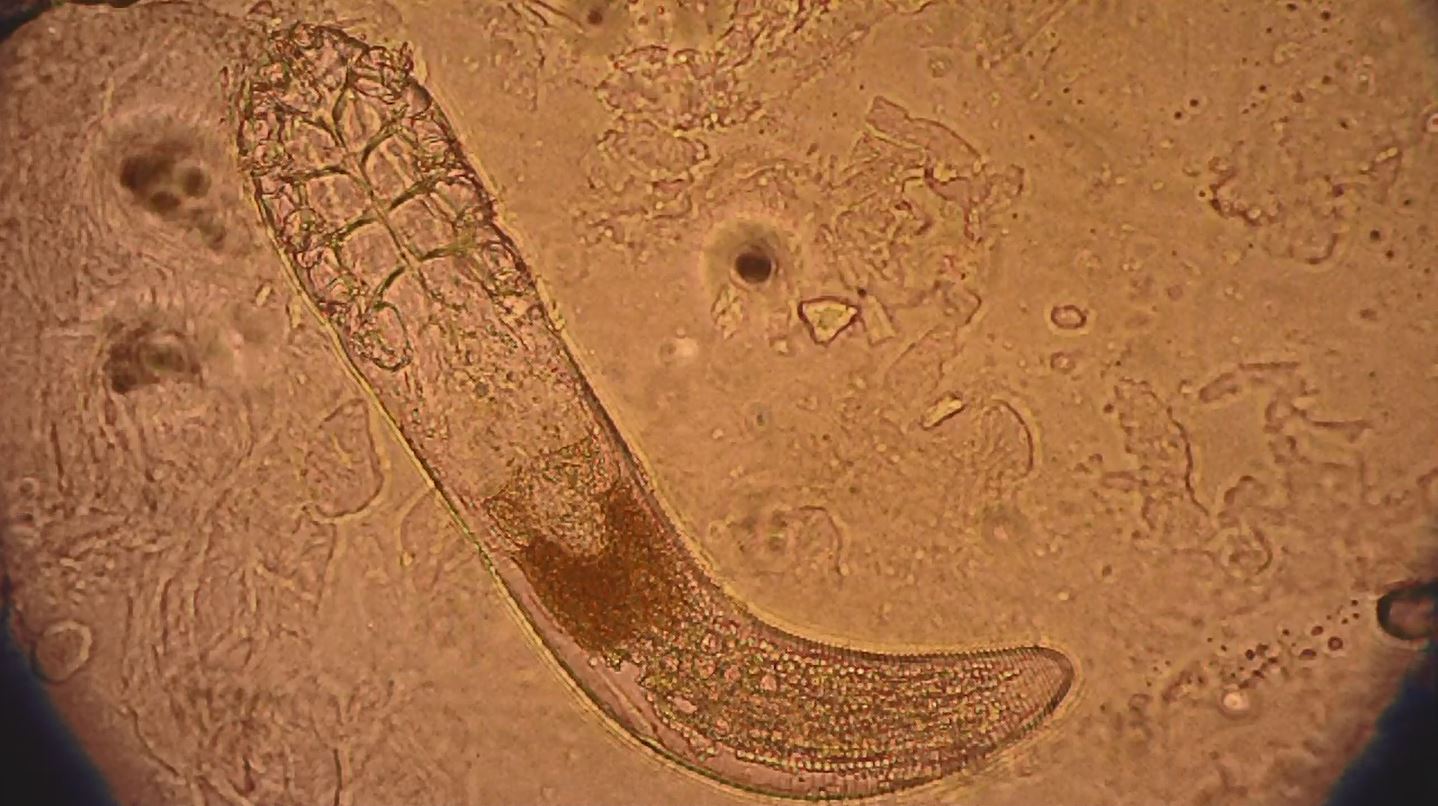Your face is mighty mite-y. And that’s a good thing
Face mites live in the pores on our faces, sucking skin secretions and evolving with us

Most people have face mites crawling over their skin. But don’t worry. They’re there to help. And we, in turn, help them.
Kar-Tr/iStock/Getty Images Plus
At night, your face is crawling with mites.
They creep out of your pores and mate. During the day, they hide from the light, sucking on your skin grease. This sounds gross, but the mites might help to keep your skin healthy. And a new study shows that the mites living — and pooping — on people’s faces need humans just as much as humans need them.
Two species of face mite live on people’s skin. Both are tiny and secretive. Demodex folliculorum lives in groups in the pores at the base of hair follicles. They hang out mostly on the nose, forehead and ear canal. D. brevis prefers the sebaceous (Seh-BAY-shuss) glands that stick out on the sides of the hair follicle.
“Because [the mites] are so difficult to observe, we really don’t know much about how they live,” says Mike Palopoli. He’s an evolutionary biologist at Bowdoin College in Brunswick, Maine, who was not involved in the study.

More than 90 percent of people have them, says Alejandra Perotti. And most people get their face mites from their mom. Perotti is an invertebrate biologist at the University of Reading in England. She studies mites, which are a type of arachnid related to spiders and ticks. Her team sequenced the genome of D. folliculorum — decoding all the DNA found in a face mite’s cells.
“It was very difficult because [the mites] are very tiny,” Perotti says. Her team found that adult mites have fewer than 1,000 cells in total. In contrast, a fruit fly has more than 600,000 cells. Face mites have so few cells that each of their eight legs is made of only three cells.

Their DNA is also stripped down. Face mites have the smallest genome of any arachnid, Perotti’s team showed. The small genome and few cells make sense, Palopoli says. “When an organism is able to get many of its needs met by another species, this often leads to the evolution of simpler bodies,” he explains.
The mites depend on their human hosts completely. Face mites might have started out as parasites, living in skin and maybe even causing disease. But over time, we developed a symbiotic relationship with our mites, where each species benefits the other. “They are cleaning our skin. They keep the pore unblocked,” Perotti says. In return, we give them homes and food. Perotti and her team published the face mite genome June 21 in Molecular Biology and Evolution.
A mite-y myth
For a long time, there was a myth that face mites didn’t have an anus to expel waste. Instead, they stored their poo in their bodies. The feces-filled body would then explode when the mite died. That’s not true, Perotti says, and it never has been. When scientists couldn’t find the face mite anus, they just assumed it didn’t exist. But it “was discovered in the [1970s],” Perotti says. Her team also confirmed it in their study.
“I think it was because [mites] are so small that it was difficult to see the anus,” Palopoli says. But he wasn’t surprised. “Other arthropods with similar lifespans all have anuses. Why would they be any different?”
With an anus, yes, live mites are pooping on your face. But the poop is “probably consumed immediately by the bacteria and fungi” that also live in your pores, Perotti says.
“I love to study these creatures because they are part of our bodies,” Perotti says. They are part of us, just like our microbiome. When we get up, and our mites go to bed, she says, “people should wake up every morning, look in the mirror, and say ‘Hello’ to the mites.”







